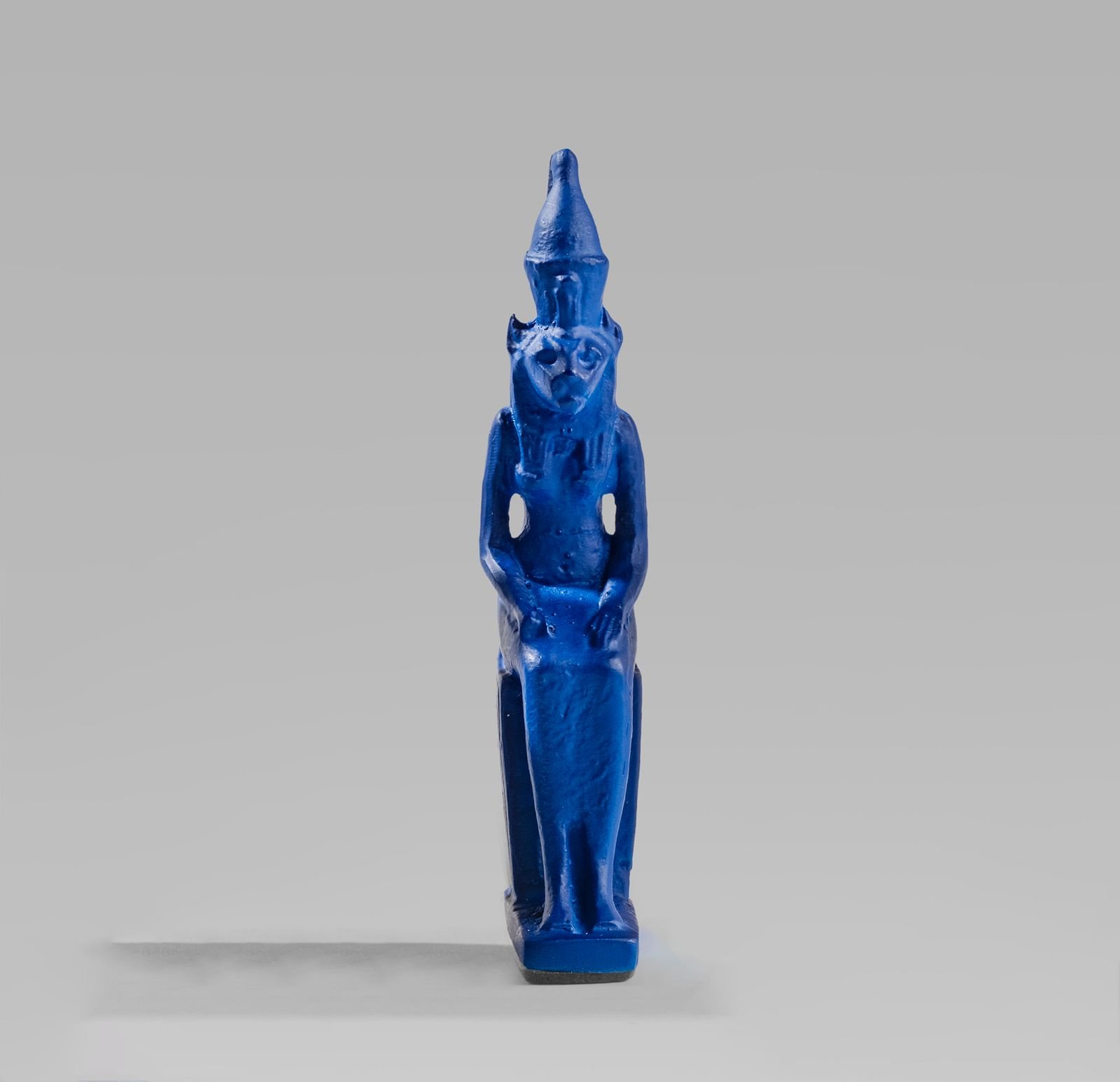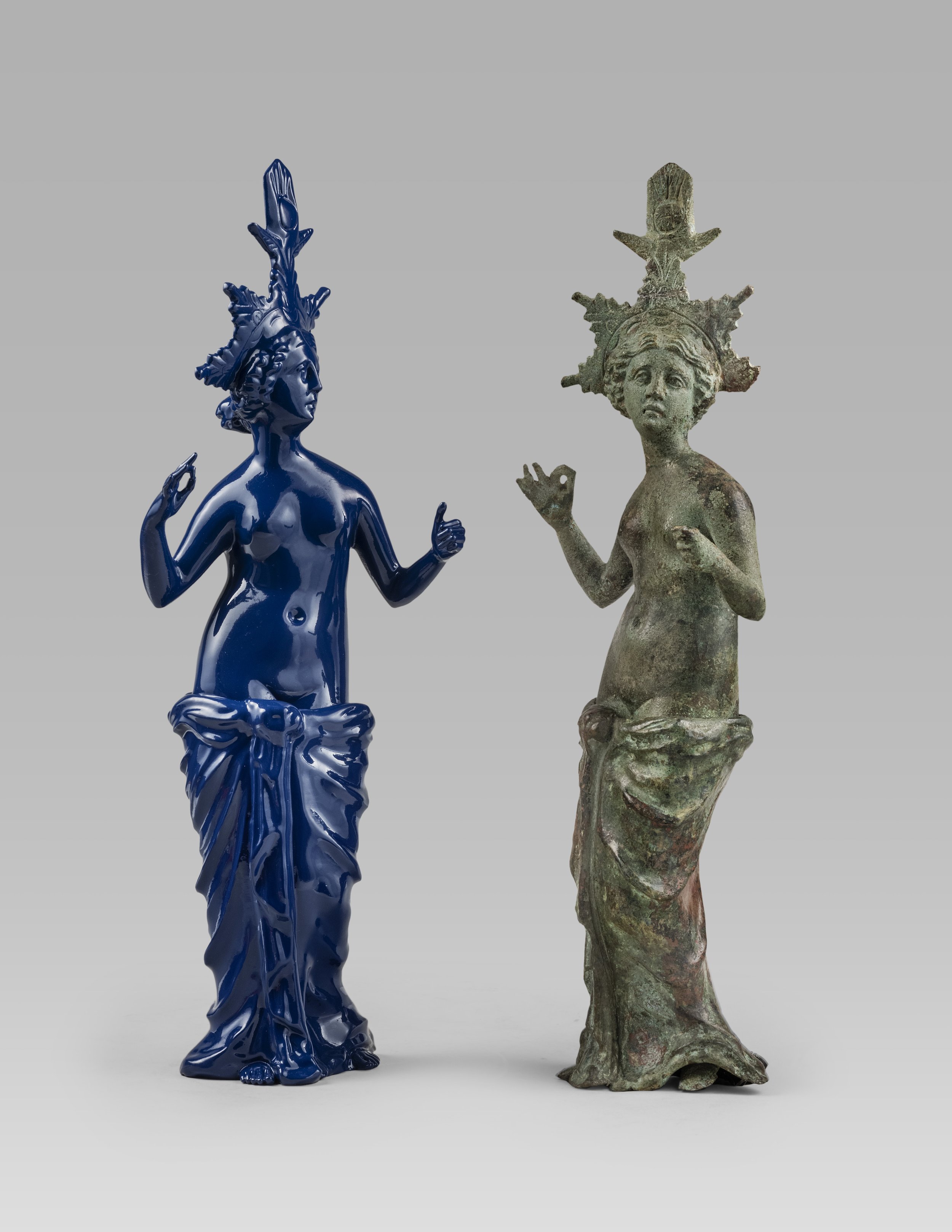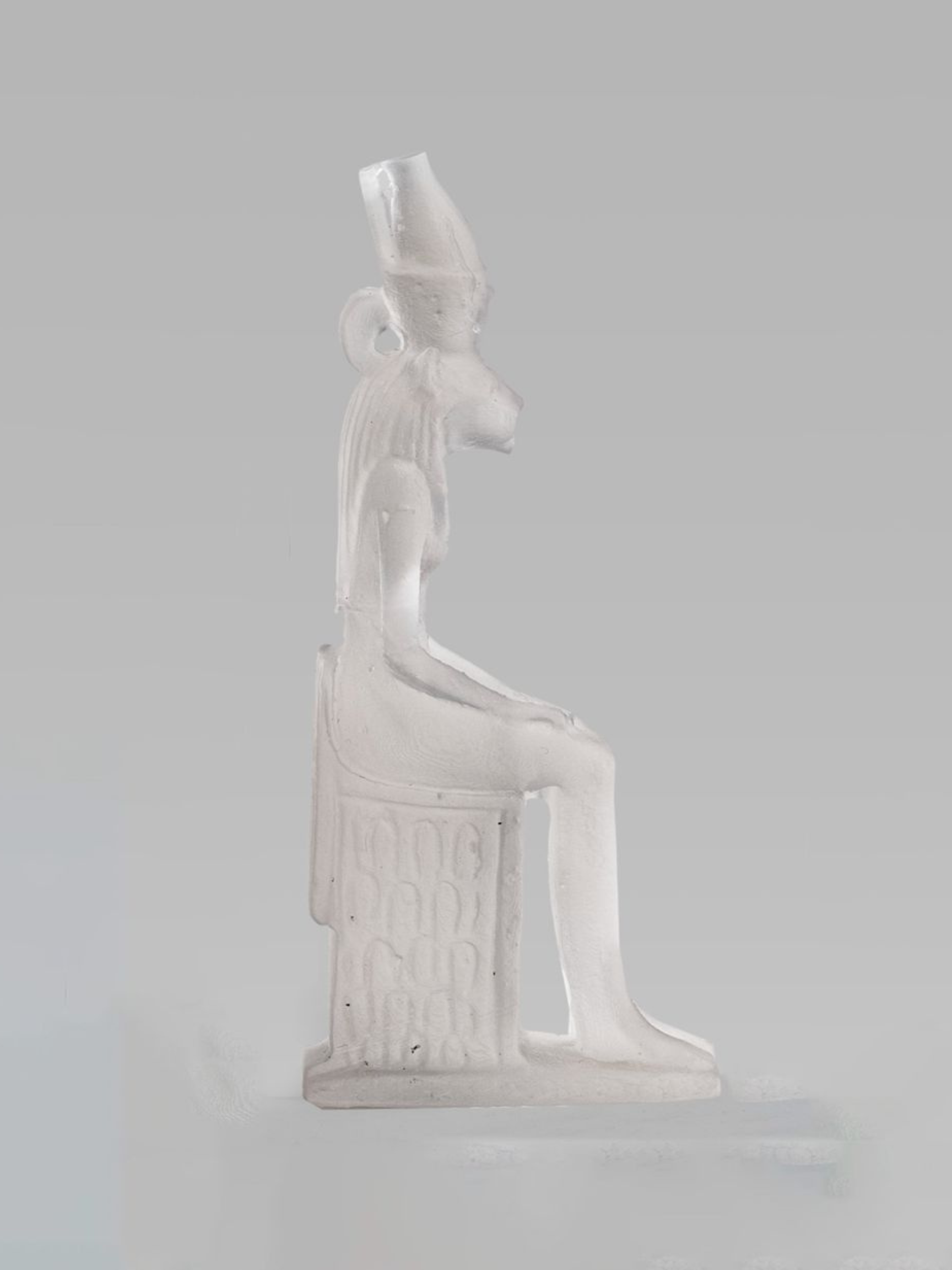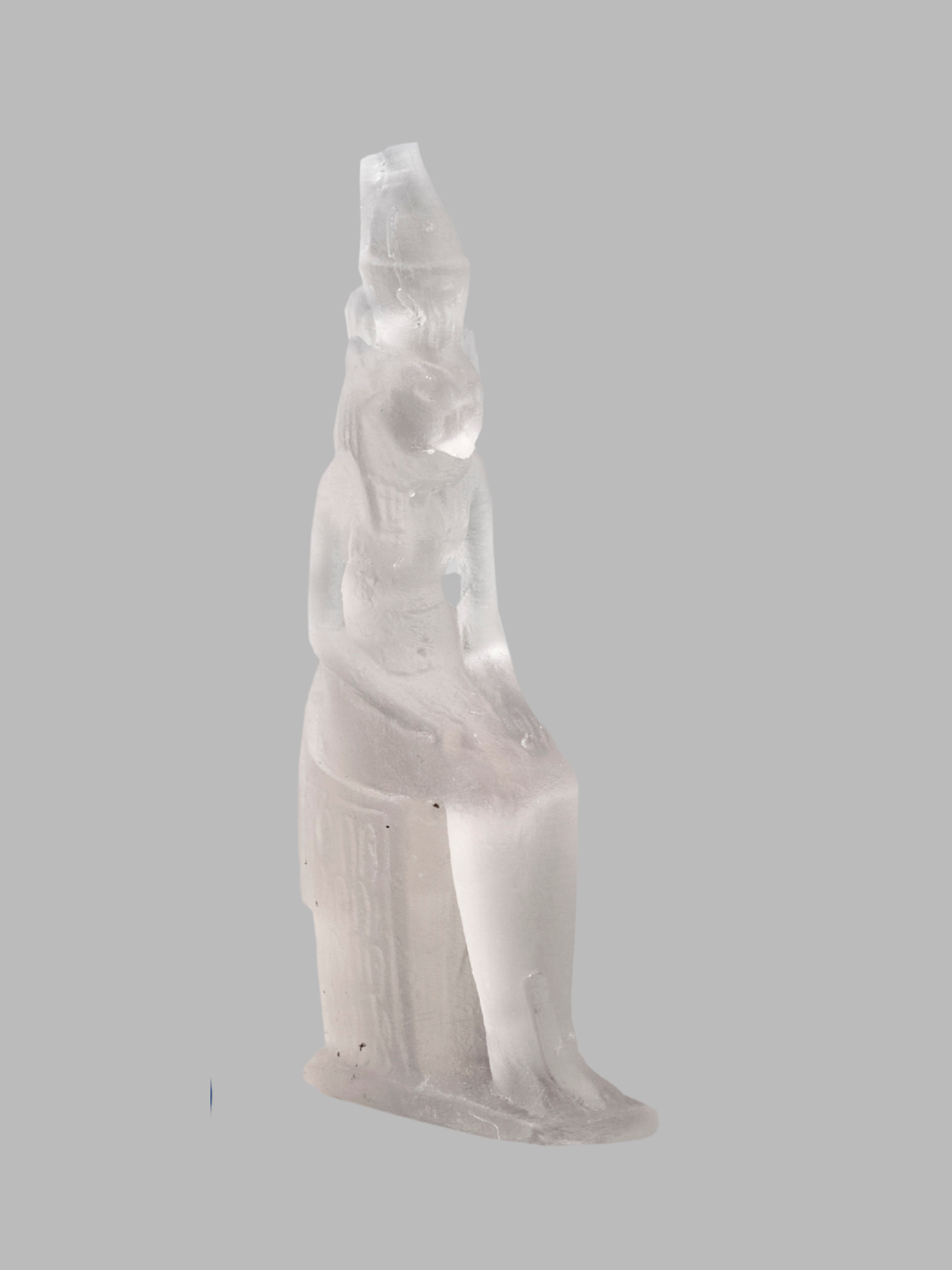 Image 1 of 3
Image 1 of 3

 Image 2 of 3
Image 2 of 3

 Image 3 of 3
Image 3 of 3




Yves Klein Blue Sekhmet
Alexander Aboutaam
Limited Edition of 30
Contempo
2025
High-grade polyresin, painted and hand-polished
H: 10 cm (4 in)
Ancient Original
Egyptian, Late Period, ca. 1069 B.C - 664 B.C.
Faience
H: 8 cm (3.2 in)
Description
This polyresin, Yves Klein Blue contempo represents Sekhmet, the Egyptian goddess of war and healing. Equally feared and worshipped, Sekhmet contributed to might he might of Egyptian military campaigns as well as the healing of pharaohs in the afterlife.
The original piece is made of a bright blue glazed composition known as faience, the oldest known type of glazed ceramic, famous for its hues of blue, green, and turquoise. Faience is composed mainly of silica (sand or crushed quartz), and small amounts of sodium and calcium, hence the pop art inspiration of the Yves Klein Blue resin on Aphrodite.
The original statuette is a unique and highly impressive due to the preservation of its details and of the delicate faience which typically cracks or chips over thousands of years. She carries on her head the double crown of Egypt, the Peshent, representing Upper and Lower Egypt, decorated with the royal cobra. Sekhmet depicted by her lion's head & shows her long mane divided across her shoulders with a full-length dress. One hand outstretched, the other closed. She sits on an openwork block throne, decorated on each side with snakes representing the stellar decans & an ank symbol is inscribed on the back. There is a loop for suspension behind her head.
Alexander Aboutaam
Limited Edition of 30
Contempo
2025
High-grade polyresin, painted and hand-polished
H: 10 cm (4 in)
Ancient Original
Egyptian, Late Period, ca. 1069 B.C - 664 B.C.
Faience
H: 8 cm (3.2 in)
Description
This polyresin, Yves Klein Blue contempo represents Sekhmet, the Egyptian goddess of war and healing. Equally feared and worshipped, Sekhmet contributed to might he might of Egyptian military campaigns as well as the healing of pharaohs in the afterlife.
The original piece is made of a bright blue glazed composition known as faience, the oldest known type of glazed ceramic, famous for its hues of blue, green, and turquoise. Faience is composed mainly of silica (sand or crushed quartz), and small amounts of sodium and calcium, hence the pop art inspiration of the Yves Klein Blue resin on Aphrodite.
The original statuette is a unique and highly impressive due to the preservation of its details and of the delicate faience which typically cracks or chips over thousands of years. She carries on her head the double crown of Egypt, the Peshent, representing Upper and Lower Egypt, decorated with the royal cobra. Sekhmet depicted by her lion's head & shows her long mane divided across her shoulders with a full-length dress. One hand outstretched, the other closed. She sits on an openwork block throne, decorated on each side with snakes representing the stellar decans & an ank symbol is inscribed on the back. There is a loop for suspension behind her head.
Creation
The creation of the contempo starts with research into authentic masterpieces, allowing Antico Contempo to determine how antiques can be thoughtfully reimagined through a contemporary lens. Every piece is examined to identify its unique qualities and what processes are required for adaptation.
High-resolution 3D scans are captured using structured light and infrared sensing, with real-time refinements made to preserve surface nuances and structural integrity. The raw data is reworked to create watertight, workshop-ready meshes.
Through a meticulous back-and-forth process of digital sculpting, 3D printing, and casting and molding, Antico Contempo creates a physical art piece that combines aesthetics of both the ancient and contemporary world.












